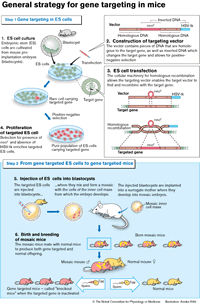SPLITTING UP IS HARD TO DO
Contribution to a better understanding of cancer and inherited genetic diseases.
Advertisement
Ingelheim, Germany, 26 October 2000 - Discoveries at the Boehringer Ingelheim-sponsored Research Institute of Molecular pathology (IMP), in Vienna, have elucidated one of the oldest mysteries of biology which will contribute to a better understanding of cancer and inherited genetic diseases. The discovery, by a group headed by British scientist Professor Kim Nasmyth, has been able to conclude that they have answered a 125-year-old genetic puzzle about cell splitting.
Before a cell divides, its chromosomes duplicate but remain attached to each other. In an event known as metaphase, the chromosomes align along the cell`s equator. The two halves, the so-called sister chromatids, appear to be tightly glued to each other, while at the same time being pulled in opposite directions by the mitotic spindle. The two counteracting forces seem to compensate each other, until - very suddenly - the connections between chromosome halves give way.
During the subsequent anaphase the sister chromatids are rapidly pulled apart and cell division is completed. Both resulting daughter cells end up with a complete set of chromosomes.
For the past 125 years, however, scientists have been puzzled by two main questions: what is the nature of the "molecular glue" that keeps sister chromatids together and how is this tight cohesion finally snipped apart?
Scientists at the Research Institute of Molecular Pathology (IMP) in Vienna, Austria, can now provide the answers to those questions. A group of yeast geneticists has been able to identify a protein complex responsible for sister chromatid cohesion. The complex was given the name cohesin.
Subsequently, Frank Uhlmann in Nasmyth`s team discovered the enzyme, which cuts cohesin and works just like a pair of molecular scissors. He called it separin or separase. For separin to become active it has to be released from the grips of another protein named securin.
The details of Uhlmann`s findings will be published in the coming issue of the American science journal CELL (October 27th, 2000). Two additional articles by other IMP scientists will accompany the paper. Their contents not only compliment Uhlmann`s discovery but also add a new dimension toit, suggesting that a universal principle among living beings has been identified.
The Italian PhD student Sara Buonomo, also in Nasmyth`s team, was able to show in yeast that the same mechanisms that regulate chromosome segregation in mitosis are also at work in meiosis.
The latest and most surprising news came from IMP group leader Jan-Michael Peters and his co-workers Irene Waizenegger and Silke Hauf. They have been able to confirm that the mechanisms that work in yeast are basically identical in humans. This is quite a sensation since earlier studies have invariably yielded negative results.












































